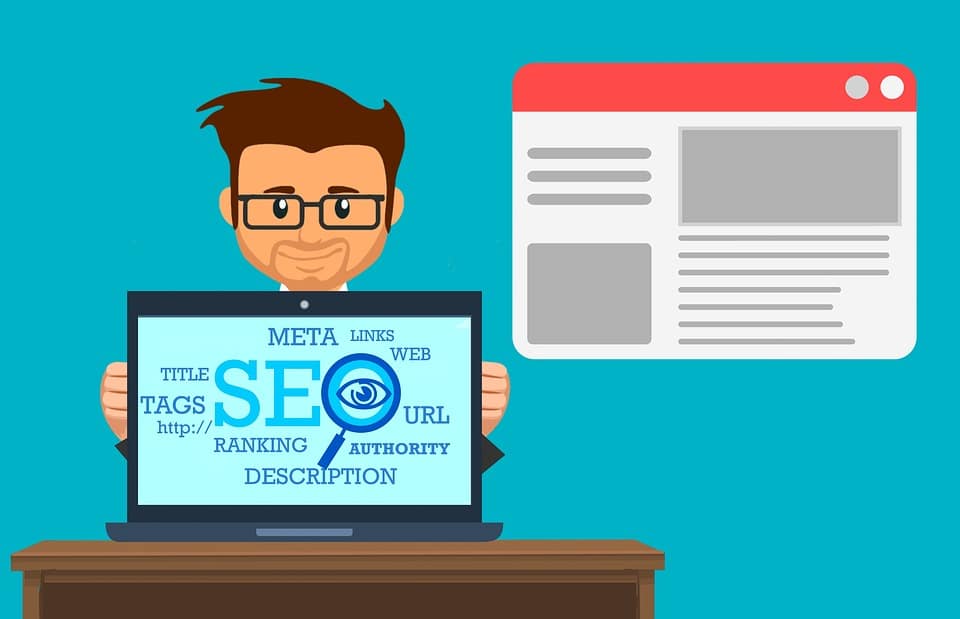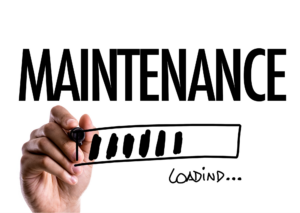This five-part blog include modules in:
- Getting to grips with SEO
- Before forking out on paid digital marketing, read this. You may reconsider.
- Six ways to improve your WordPress’ SEO, even if you’re a beginner
- A Japanese inspired approach to SEO management
- Things to consider with your WordPress SEO strategy
With a whopping 3.010 billion Internet users worldwide, businesses just like yours are finding it increasingly more difficult to stand out Online.
As a result, many businesses are turning to paid advertising. Forking out small fortunes for search engine, display, affiliate and mobile marketing.
Yet many to still fail to stand out Online and waste valuable money and time investments. All while forgetting the benefits of organically growing an Online business with search engine optimisation (SEO).
This is precisely why I’m going to give you a beginner’s guide on how to understand and build a strategic SEO strategy. Helping you to stand out Online – Without spending a penny! (Thank me later).
According to our dear favourite Wikipedia, SEO is “the process of increasing the quality and quantity of website traffic “. The end goal of SEO is to increase your website and webpages visibility to users via search engines. If your SEO strategy is effective, these visitors will be converted into customers or even brand loyalists.
How does SEO work?
The web is infested with search engine web spiders that systematically scan content – known as web crawling or spidering. If the web spiders find any new and updated information, they will update the web page or website’s index.
The best part is, these little spiders can be influenced by the quality and visitor demand for your content.
So, unlike paid search engine marketing, SEO uses free tactics known as ‘organic’ marketing to increase the visibility of a website. Don’t worry, I’ll go over the various techniques later – so hold onto your horses for now!
These various tactics allow search engines, like Google and Yahoo, to better crawl and index your content. This, in turn, improves your ranking on Google’s search pages.
Sounds pretty straight forward; however, there are over 200 factors that these Online bugs take into account. These factors can be grouped into 9 categories (I’ve even given you a few examples too! But if you’re craving more info – click here for the full list):
Page level factors
Backlink factors
User Interaction
Algorithm rules
|
Site level factors
Social signals
Brand signals
On-site web spam factors
|
Once the web spiders are done crawling and indexing content. Google then matches relevant and useful content within its search algorithm. It’s at this point, the spiders assess the factors to rank search results.
Yet it only takes milliseconds to get pages on pages of results that match searches. (These spiders sure are speedy!)
So you’re caught between the choice of paid or organic search engine marketing (SEM)? And you know if your SEM campaign sucks, you’ll fall way behind the competition in a matter of time.
Don’t worry, you’re not alone. Thousands of people just like you face the same dilemma.
So if you’re short of a buck, or don’t quite fancy joining the 61% of marketers who waste money on adds spends (due to inaccuracy and inefficiency).
Keep reading to find out how SEO might just trump paid SEM after all.
SEO paid SEM… What’s the difference?
Search engine optimisation (SEO) is the organic process of increasing your website’s internet traffic through content and website management. This is done by encouraging web crawlers to index and rank your content.
And well, for paid digital marketing, the concept is pretty much in the title. Yes, paid digital marketing involves increasing your website’s visibility, through paid strategies. In Search Engine Marketing, You’ll often hear people call this Pay Per Click (PPC) or Cost Per Click (CPC) advertising.
Gaining trust
People are becoming more and more concerned about the power of marketing. In fact, 61% of marketers prioritise SEO in their marketing plans.
As people become more aware of paid online marketing, they’re also becoming more defensive towards it. Causing many to prefer clicking on organic links.
Can’t believe? Well here are some facts:
- 54% of users don’t trust banner ads (Bannersnack), and ad blocking is on the rise! (eMarketer)
- 68% of online experiences start at the search engine (Ahrefs)
As more visitors show a preference for organic links, SEO can help build the trust of your intended audience.
Get more clicks!
Surprisingly, 80% of online users ignore paid online ads. And what’s more – perhaps the growing distrust in paid ads has led to what now called ‘Banner Blindness’.
This Banner Blindness happens when your potensh customers ignore banner-like (paid) information. Check out the image below which shows The Nielsen Norman Group’s eye-tracking research. The red dots show where users look on a particular Google search-engine results page.
And, It’s ‘free.’
I’ve said it, and I’ll repeat it. SEO is free! (Well, if you don’t take into account your more extensive business costs.) Although paid digital marketing may only cost you a small fortune, SEO certainly trumps on cost-effectiveness.
Which is great! Once all the above ranking factors are satisfied, SEO can be a level playing field.
So, no matter the size or nature of your business, you have the chance to stand out from the crowd.
Allowing your business to get higher returns on marketing investments – whether that be time or money! (Yay).
(1) Pick the right host and theme
Picking the right host and theme on your WordPress site is the first step in creating a SEO strategy.
The host:
A paid hosting service, like us here at WP Fiddly Bits, will help you to manage your WordPress sites.
Although WordPress has hosting services for beginners and bloggers. Once your website grows more technically demanding, you’ll need to start to think about getting a managed hosting service.
If you get the right host (or hostess with the mostest). You’ll benefit from both tech expertise and marketing know-how. Allowing you to sit back and relax, and not worry about your website’s development and tech performance. Leaving you with more time work on tasks more important to you. Win-win right?
The theme:
The right WordPress theme has the ability to improve your website’s SEO ranking with the following:
- Design and structure
- Site speed
- The clarity to search engines
A word to the wise is that a WordPress theme does not directly improve your website’s SEO. However, a theme with an effective SEO feature, will. So when you’re searching for the right theme, never forget to check if it has a built-in SEO feature. This will save your bundles of time!
(2) The SEO tools
So, if you don’t fancy improving your site’s SEO the old-fashioned way. Or even if you’re a seasoned SEO pro who needs a quick automated double-check. SEO tools are a great way to competitively optimise your site.
Yoast SEO
Dubbed the ‘Ultimate SEO Plugin’, Yoast SEO provides a step-to-step approach to optimise keywords, key phrases, synonyms and related keywords.
Although the plugin is free to use without a premium upgrade, Yoast SEO is only compatible with self-hosted WordPress sites.
SEOquake
The plugin gives data-rich information and metrics of internet pages, including your competitors. This free extension is ideal for competitive analysis. Giving you all the need-to-know information on keyword density and difficulty, URLs, search queries and much more.
Google Keyword Planner
Alright, so this one isn’t quite a plugin, but it sure does help with SEO planning.
Keyword Planner is a free product for experimenters and the experienced alike. This platform will help you to analyse the potential of keywords and phrases. Completely free of cost!
The downside to Keyword Planner is that it is more of a research tool – so it doesn’t give specific advice on how to optimise content like Yoast SEO and SEOquake.
So my advice is to use this planner alongside one of the other plugins to research which keywords are most competitive for your website as a starting point
(3) The Permalink Structure
A permalink is a permanent URL assigned to a specific webpage. They help improve your SEO ranking by allowing search engines to index them quickly & tempting visitors to click links.
The permalink normally includes the domain name (e.g. = https://wpfiddlybits.com/) and a slug (e.g. /something-like-this).
To adjust your permalink, visit the admin area on your WordPress area. The default permalink might look something like this: https://wpfiddlybits.com/?p=123
But don’t keep it like that! Bloggers like Neil Patel suggest changing the permalink setting to the Post Name or Custom Structure setting. If you’re thinking of creating a Custom Structure, here are some suggestions below:
Your Permalink should be clear and easy to read. You should avoid using dates to guarantee timeless content.
(4) The Sitemap
If you have a content rich or relatively new website you should consider creating a sitemap.
Your sitemap should include an XML list of pages, photographs, videos and files on your site and the connections each of them.
Although sitemaps don’t directly improve your SEO; when you provide information about the content and files on your site, it helps the web spiders scan and index your content.
(5) The Blog
Optimising your posts for SEO will help the relevancy and ranking of your website.
Blog writing is an easy way to improve your site’s SEO by embedding particular keywords and phrases. The trick is to choose one competitive keyword, you can use Google Keyword planner for this. Then use it within the following:
- Title
- Heading and subheading
- Content
- URL
- Image alt text
- Meta description
Focusing on one keyword will help the positioning and relevancy of your content. The content should always be related to that keyword. For example, ‘Search Engine Optimisation’.
You can even choose a secondary keyword as well, like ‘WordPress’. Bar, your content should always be focused on 1-2 keywords, so you don’t confuse your readers and search engines.
Remember to research your keywords by using the Google Keyword Planner. Then to double-check your performance with a WordPress SEO plugin.
Oh, one last thing! Search engines are getting increasingly more intelligent. You should never try to outwit them by using irrelevant keywords or spamming content. Otherwise, you’ll get in trouble with Google Panda and Google Penguin.
Want to know more about how Blog marketing can improve SEO? Click here.
(6) The Links
Links, or hyperlinks, pointers to websites and content that readers can click in-text. They help your SEO strategy in terms of relevancy, popularity and authority.
In the words of Moz Pro, links ‘act a lot like real-life reputation’. The more spoken about you, the more popular you’ll become.
These links are known as the ‘editorial links’ that people independent of your website include on their sites. The better your marketing and content strategy, the more editorial links you’re likely to gain.
However, if you have a newer website, or something somewhat niche. It may be harder to get other people on the web to link to your content. So you may prefer to opt in to an Internal and External linking strategy.
- Internal links – These are the hyperlinks you place in your content that links to other areas of your website. They help search engines understand the importance of particular content. Helping you build the authority of your webpages.
- External links – Are the hyperlinks you provide on your website that link to external sources, including your content competitors. This is a relatively new SEO technique, but search engines like this as it helps build the trust of your site.
- Mobile SEO strategy
Once you believe your WordPress site is fully SEO enhanced. You ought to double-check that it’s Mobile, smartphone and tablet friendly.
Pretty important as a recent report suggests mobile traffic holds around 48% of overall internet traffic. And is forecasted to increase seven times by 2021! Better yet, in recent years, Google altered its search algorithms to mobile-first indexing.
Since mobile really is the future for SEO strategies. Here are some simple ways to implement a mobile SEO driven site:
Site design
Make sure your content look the same on different displays: Such as mobile, desktop and tablet? And that your site responsive on different display types. To make things easier, you can use a responsive web design setup or a WordPress theme that already has one.
Dynamic serving
According to Google, your pages should use the same URLs across each device used.
Things to avoid
Using a Flush plugin and pop-ups may not be either incompatible or frustrating for your visitors. So avoid using things that make it harder for visitors to access.
Kaizen improvement is the Japanese business approach that all marketers and web-enthusiasts should know about. It’s based on a theory of continuous improvement for long-term success.
This approach aims to eliminate waste and to involve all employees involved with a particular task.
Although this concept normally sits with operations and supply chain management. I believe a Kaizen mentality is the key for any online marketing strategy, especially SEO management.
Here’s why…
You may think that the internet traffic has peaked, but web traffic is estimated to increase by 26% by 2022.
Meaning, more and more people will continue to be connected online. Providing your business with even more opportunities and threats.
That’s why it is important to remain competitive and future-focused with your website. Your competitive edge will rise from your continuous SEO improvement and implementation.
Using the Kaizen 5S approach to improvement – here’s how you can implement a Japanese approach to SEO.
Sort, Set and Shine
“For every hour spent in organising, an hour is earned” – Benjamin Franklin
Sort and organise, then give everything a place. This may involve creating an SEO process for your team which may look something like:
- Creating a content calendar
- Listing and brainstorm keywords based on your calendar
- Setting up a blog area for your website
- Schedule weekly, bi-weekly or monthly blog posts
This is quick and easy ways to staying organised with your SEO strategy. You’ll of course benefit from the productivity, as per Benjy’s quote.
Standardise
If you’re working in a team, it is important to standardise your best SEO practices with your members.
Here at WP Fiddly Bits, we use an online training service by Digital Marketer. Allowing us to get all of our employees up to speed in just a short matter of time. This way you can really strengthen the SEO skills of your team members, regardless of their initial abilities.
You might also wish to standardised certain practices. Like remaining consistent with your WordPress theme, your SEO plugin, or even your style of blog writing. This way you’ll have a unified a strong approach to your SEO strategy.
But not fail to innovate! Remember it’s all about balancing between standardisation and differentiation. So don’t forget to do the two.
Sustain
Yup it’s all about discipline for the final ‘S’. Upkeep standards, don’t slip below the belt.
It’s easy to create an amazing SEO strategy and then fall to the temptation of paid-advertising. But, remaining consistent, with a quality SEO strategy, will provide you with long-term business value.
Even better, 57% of B2B marketers believe SEO generates the highest amount of leads. Above all marketing activities.
Wahey! You made it to the end of my five-part beginner’s guide to WordPress search engine optimisation (SEO).
Hopefully, I have managed to convince you of the powers of SEO and the value it will bring to your WordPress website. But unfortunately, it’s not all swings and roundabouts, and a strong SEO strategy won’t be enough to increase visitor flow to your WordPress site alone. (Meh – such as life).
So, as the final blog in this five-part series. I have put together three vital things to consider when you’ve completed your SEO strategy.
1. Holistic marketing
This series of blogs was not intended to swerve you away from paid search engine marketing (SEO). Better yet just encourage you not to overlook the power of SEO.
Just like life, things work together when they work together. So to be competitive, it’s better to integrate both paid and organic digital marketing.
Thinking wider than standing out online. A top tip is to never rely on digital marketing alone, and your marketing strategy really ought to be integrated.
2. Patience is a virtue
Seo isn’t quick or easy. SEO takes time to acquire lead generation – and your rankings will only increase through continuous improvement.
Research from Ahrefs blog found that it takes the following days to rank on Google:
- 650 days – 10th position
- 750 days – 5th position
- 950 days – 1st position
So, if you’re a new business or launching a new campaign. Search engine marketing might be better for your shorter-term needs.
3. Are you SEO compatible?
Believe it or not, but SEO doesn’t work for everyone. There may be instances where your website may purely benefit from paid search engine marketing (SEM) and not SEO. H
- How quickly do I need turnover in website traffic?
As I mentioned before. If you require a short-turnaround, using paid SEM may be more beneficial to your business.
- What is the nature of my website’s product or service?
Depending on your product or service. Your WordPress website may benefit a whole world more from paid SEM, or closer technical support.
For instance, maybe you’re launching a one-off product or one of limited volume. Then creating a long-term SEO campaign would quite simply be a waste of time. Then a paid SEM strategy would certainly be for you!
In other cases, there might be other aspects of your WordPress website that may need closer attention to detail. For instance, how secure is your website in keeping the bad guys out? Or maybe you need closer attention to improving your website’s uptime?
- Do I have the money to do both?
Hey! If you’re rolling in piles of additional marketing budget. Why even question launching a paid SEM campaign? A holistic marketing strategy will certainly be effective for growing your WordPress website. Just go for it – as long as your strategy is effective, you’re bound to see positive results from using paid SEM.
Alison Rothwell
Alison is the Director and Founder of WP Fiddly Bits, the WordPress Website Maintenance experts, and contributes to the WP Fiddly Bits WordPress blog. She also uses her background in marketing to help clients get found everywhere online.





